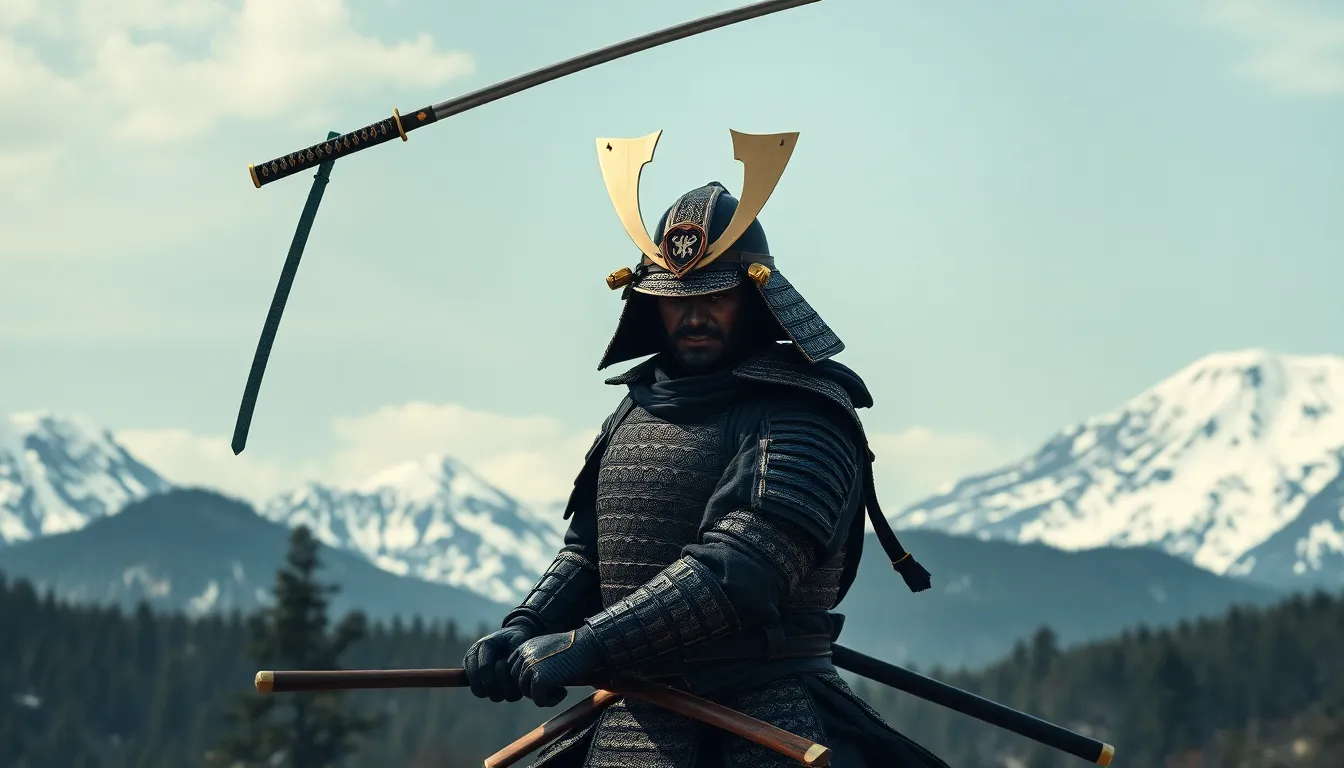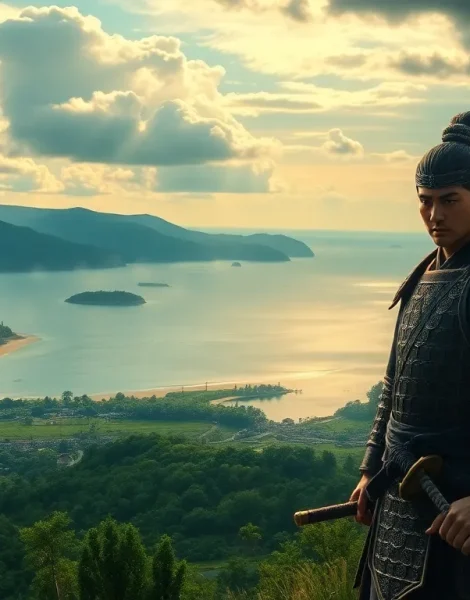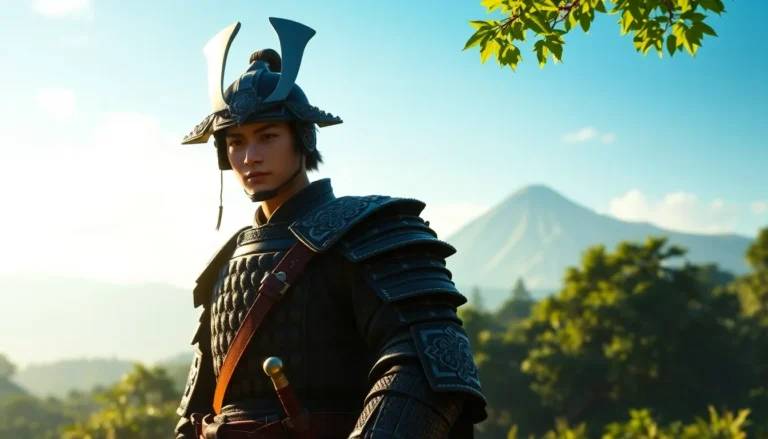In a world where samurai honor clashes with stealthy tactics, “Ghost of Tsushima” takes players on a breathtaking journey through feudal Japan. Picture this: stunning landscapes, epic sword fights, and a protagonist who can go from noble warrior to sneaky ghost faster than you can say “katana.” It’s not just a game; it’s a chance to embrace your inner ninja while sipping on your favorite beverage—no judgment here!
Table of Contents
ToggleOverview of Ghost of Tsushima Full Game
“Ghost of Tsushima” immerses players in the stunning world of feudal Japan. The game features an open-world environment rich with diverse landscapes, from serene fields to towering mountains. Players control Jin Sakai, a samurai fighting against the Mongol invasion. Notably, the gameplay combines traditional swordplay with stealth mechanics, allowing for dynamic combat choices.
Combat in “Ghost of Tsushima” showcases various styles. Players can engage enemies head-on using samurai techniques or sneak past them as a ghost. The game encourages experimentation with both approaches, catering to different play styles. Challenges such as duels and large-scale battles deliver exhilarating experiences.
Storytelling plays a vital role in the narrative of “Ghost of Tsushima.” Jin’s journey explores themes of honor, sacrifice, and identity. Players experience character development through gripping interactions with allies and adversaries. Voice acting and cinematics enhance emotional connection, making the storyline compelling.
Exploration beyond combat adds depth. Players can discover hidden shrines, collectibles, and side quests that enrich the game world. Scenic vistas provide opportunities for in-game photography, appealing to creative players. Each element contributes to the game’s overall aesthetic and immersive experience.
The craftsmanship of “Ghost of Tsushima” extends to sound design and visuals. Dynamic weather systems and day-night cycles enhance realism, while traditional Japanese music complements the ambiance. The attention to detail creates a captivating atmosphere that resonates with players.
Overall, “Ghost of Tsushima” stands as a testament to engaging storytelling and innovative gameplay, appealing to both casual gamers and enthusiasts.
Gameplay Mechanics

“Ghost of Tsushima” offers engaging gameplay mechanics that enhance player immersion in its feudal Japan setting. The game features a rich combat system and an expansive open world, allowing for varied player experiences.
Combat System
The combat system emphasizes fluidity and strategy. Players choose between samurai techniques, focusing on defensive maneuvers or aggressive strikes. Each combat encounter requires players to assess enemy strengths and weaknesses, making tactical decisions essential. The game includes multiple stances—each designed for specific enemy types, enhancing combat depth. Players can also utilize ghost tactics, employing stealth attacks and distractions. Such diversity in combat encourages creativity in overcoming challenges. Lives of opponents fluctuate, requiring quick reflexes and mastery of techniques.
Exploration and Open World
Exploration plays a crucial role, offering a vast open world filled with secrets. Players traverse diverse landscapes, ranging from lush forests to snowy mountains. Hidden shrines and collectibles reward curiosity, enriching the gameplay experience. Side quests deepen the narrative, revealing character backstories and local lore. Guided by the wind, players discover new paths organically, creating a sense of adventure. Dynamic weather adds realism and alters gameplay, enhancing immersion. Gathering resources while exploring helps in weapon upgrades and gear improvements. Overall, a rich world invites players to wander and engage with its beauty.
Visual and Audio Design
“Ghost of Tsushima” boasts impressive visual and audio elements that elevate the gaming experience. Players immerse themselves in stunning landscapes filled with vibrant colors and intricate details.
Graphics and Art Style
Graphics showcase lush forests, rolling hills, and serene beaches, all expertly designed to reflect feudal Japan. The art style combines realistic textures with painterly aesthetics, creating a captivating environment. Character models exhibit fine details that enhance the emotional impact during cutscenes. Dynamic weather changes influence the atmosphere, from gentle rains to fiery sunsets, enriching exploration. Each zone draws players into a unique visual narrative, demonstrating the game’s artistic commitment.
Soundtrack and Voice Acting
Soundtrack features traditional Japanese instruments, complementing the game’s setting beautifully. Ambient sounds create an immersive ambiance, heightening the sense of realism throughout various locations. Voice acting resonates with authenticity, enhancing character depth and emotional storytelling. Dramatic musical scores elevate pivotal moments, intensifying the action and emotional stakes. Together, audio elements enrich gameplay, creating a harmonious blend of sight and sound that keeps players engaged.
Story and Characters
“Ghost of Tsushima” immerses players in a gripping narrative set during the Mongol invasion of Japan. The journey follows Jin Sakai, a samurai grappling with his duty and the need to adapt to survive.
Main Narrative
In the main narrative, Jin faces the harsh reality of war. He transforms from a traditional samurai into a ghost, using stealth and cunning to fight against overwhelming odds. His internal struggles with honor and loyalty drive the story forward. Themes of sacrifice resonate throughout, showcasing the personal and collective impacts of war. Players witness Jin’s evolution as he learns to embrace unconventional methods to protect Tsushima, blurring the lines between honor and survival. The compelling plot encapsulates the fight for freedom and identity amidst conflict.
Supporting Characters
Supporting characters enrich Jin’s journey and highlight various perspectives during the invasion. His uncle, Lord Shimura, embodies the samurai code, placing honor above all else. In contrast, characters like Yuna provide a pragmatic outlook, encouraging Jin to use tactics outside his training. The bond between Jin and Yuna develops throughout the story, illustrating the importance of collaboration. Each character brings unique skills and motivations, creating depth and emotional stakes. Their interactions challenge Jin’s beliefs, impacting his growth and decisions throughout the game.
Reception and Impact
“Ghost of Tsushima” received widespread acclaim upon release, celebrated for its stunning visuals and immersive gameplay. Critics praised its narrative depth and the ability to blend traditional samurai combat with stealth mechanics.
Critical Acclaim
Numerous reviewers awarded high scores to the game, with many outlets recognizing it as one of the best titles of 2020. Metacritic recorded an average score of 83 from critics and 9.0 from users, showcasing its strong reception. Awards include several Game Awards and nominations, particularly for Best Action Adventure and Best Art Direction. Many critics highlighted how the game paid homage to classic samurai films, skillfully integrating cinematic elements into gameplay. The compelling character arcs and rich storytelling contributed to its status as a standout title in the action-adventure genre.
Player Community Response
Players frequently praised “Ghost of Tsushima” for its open-world exploration and environmental storytelling. Social media channels buzzed with discussions about gameplay mechanics, beautiful landscapes, and the moral dilemmas faced by Jin Sakai. Community forums featured fan art and cosplay, expressing admiration for character designs and the world. Additional downloadable content, like the Iki Island expansion, further fueled engagement, receiving positive feedback for expanding the narrative experience. Overall, player enthusiasm reflects a strong community bond, celebrating shared experiences in feudal Japan.
“Ghost of Tsushima” stands as a remarkable achievement in gaming that captures the essence of feudal Japan. Its blend of stunning visuals and deep narrative invites players to explore a world rich with history and emotion. The dynamic gameplay encourages creativity in combat and offers a unique experience that caters to various play styles.
Players are left with a profound sense of connection to Jin Sakai’s journey as he navigates the complexities of honor and identity. The community’s enthusiasm and the game’s accolades further solidify its place in the hearts of gamers. With its engaging storytelling and immersive environment “Ghost of Tsushima” remains a must-play title for anyone seeking an unforgettable adventure.









